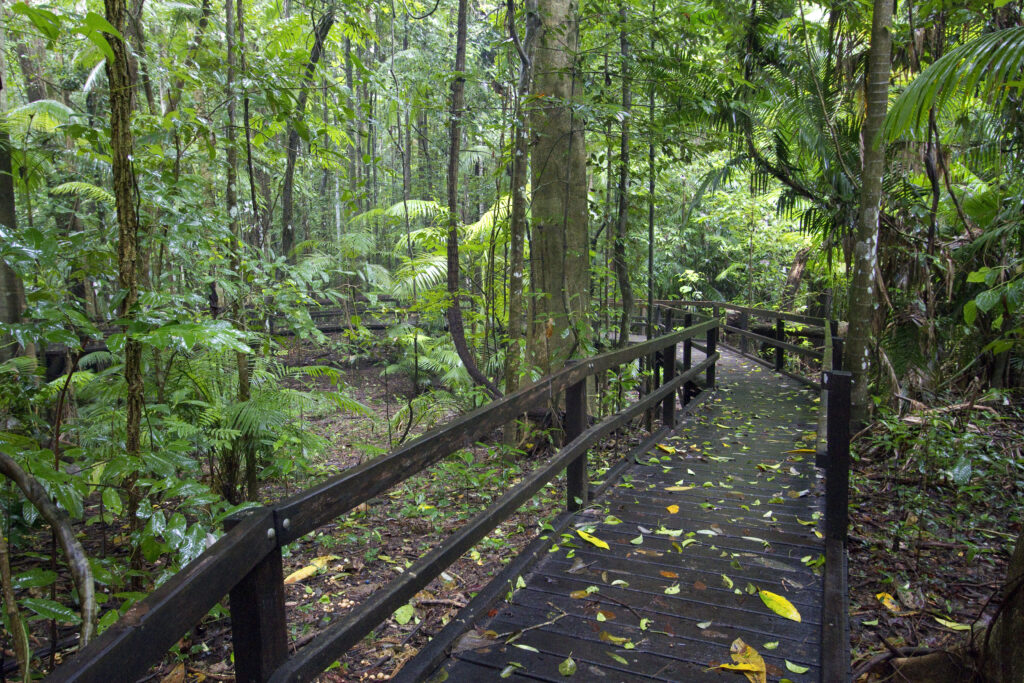Protected Magazine
Why & How Would We Place a $ Value On Our National Parks?
Why place dollar values on national parks?
National Parks generate a wide range of benefits to society including their contribution, directly and indirectly, to our economies and to our general well-being.
However, most of these benefits are not explicitly incorporated or even acknowledged in our standard measures of economic performance such as national income (ie. GDP).
One important reason for this is that the services our national parks provide as inputs into our country’s production/output/income are effectively free – gifts of nature. In many respects they are invisible.
Why does it matter that we have dollar values for national parks?
If a resource is under-valued in monetary terms, such as the air we breathe, if left unregulated we will over-utilise it, possibly beyond a sustainable level. If it is not evident that it is contributing significantly to the economy/incomes/welfare, policy-makers could be tempted to use the resource for some other economic activity that appears to generate more visible/tangible economic benefits; eg. logging of old-growth forests; property development of vacant park land for commercial and/or private use.
For these reasons our governments (Federal, State and Local) allocate part of their budgets to the acquisition and maintenance of parks in the public interest, and introduce policies and regulations, such as Queensland’s Protected Areas Strategy 2020-2030, to conserve national parks in the public interest for present and future generations.
For all these reasons placing a dollar value on our national parks is important.
Two main practical reasons are: (i) for advocacy purposes to justify the protection and sustainable management of national parks; and, (ii) provide some basis on which the level of spending by government on their acquisition and maintenance can be determined and justified, vis-à-vis spending in other areas.
What sorts of economic values do national parks generate?
Like other natural assets, such as the Great Barrier Reef, national parks provide a range of values that should, ideally, be incorporated into any attempt to estimate their ‘Total Economic Value’ (TEV) – the term generally accepted in the environmental economics literature. TEV consists of two broad components of value: ‘use values’ and ‘non-use values’. The former are the values generated by our use – whether directly as, say, recreational visits, or, indirectly, in terms of production of oxygen and carbon sequestration. But, we also gain values from parks without using them (directly or indirectly). For example, we value the option of keeping them intact so that we, or future generations, would have the option of using them at some point in the future. We also value the continued existence of natural wonders even if we have no intention or ability to visit them.
How can we estimate dollar values of national parks?
The environmental economics discipline has designed a whole host of methods for estimating dollar values for natural assets that do not have a market price; ie. they are not traded in markets like the many goods and services we spend our money on every day. These are generally referred to as ‘Non-Market Valuation methods’. They range in complexity and in terms of the breadth and rigour with which they are able to capture the various elements of TEV.
Our recently published study on ‘Estimating the Value of National Parks to the Queensland Economy’ (2020), demonstrates how it is possible to calculate the annual contribution of Queensland’s national parks to the state’s economy (Gross State Product). This study was carried out over three years (2017-2020) and involved designing, testing and implementing a comprehensive survey of visitors to a cross-section of national parks. From these surveys it was possible to estimate two main components of TEV; (i) the additional dollar income generated from national park visitors that would not have been generated if the parks were not there (or not accessible); and, (ii) the dollar values of the additional non-monetary benefits that visitors to the national parks gained. It is important to stress that these estimates are not based on the total expenditure, in the region in which the park is located, of all tourists who visited a national park, but more correctly, that expenditure that can genuinely be attributed to the parks and that would not otherwise been incurred in the absence of the parks. The survey data were then combined with secondary data from Tourism Research Australia (TRA) to apply the values produced from the sample of national parks across all 312 national parks in Queensland. To estimate the non-market value of the benefits to users of the national parks, our study employed the Travel Cost Method. This method estimates how much park visitors were willing to pay for their visits, from which we subtracted the actual amount spent on the visits (on travel, accommodation etc.), to obtain a dollar value for the net gain – referred to as Consumer Surplus in the economics discipline.
How valuable are our national parks: A case study of Queensland?
In summary, the Queensland study found that:
* Total expenditure in 2018 generated by national parks was approximately $2.64 billion which is equivalent to more than 11% of all tourist spending in Queensland in that year.
* The total contribution to Gross State Product (GSP; direct and indirect) was approximately $2 billion, equivalent to approximately 10% of the tourism sector’s contribution to GSP in 2018.
* The total value of the benefits to park users (consumer surplus) was estimated at a further $659 million in 2018, of which $238 million was gained by visitors from Queensland itself. (The difference was made up of benefits to inter-state and international visitors.)
* The expenditure generated by the national parks supported over 17 thousand jobs in Queensland in 2018 out of a total of 234 thousand jobs in the whole tourism sector (approximately 7.5%).
Perhaps the most important finding from all of this from a policy perspective was that for every dollar spent by government on national park maintenance in 2018, approximately $10 of benefits were generated (across all of Australia) or, $6.30 in Queensland.
It is data such as these that provide a sound basis for evidence-based decision-making when it comes to allocating our scarce resources across the competing claims on governments’ budgets. This Queensland case study provides a good illustration of why estimating the dollar contribution of national parks to the economy is important and possible, and why similar such studies need to be undertaken across all states in Australia.

Furthermore, this study underlines the importance of sufficient government funding to maintain the health of the fauna and flora in our national parks ensuring that these valuable assets are preserved and available to present and future generations.


